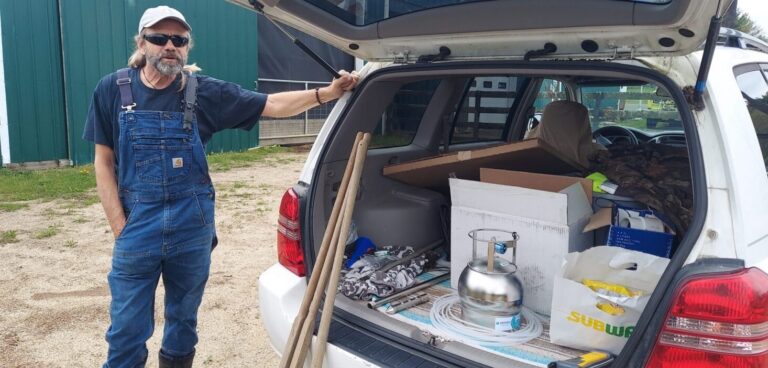With the help of volunteer scientists at Columbia University’s Lamont-Doherty Earth Observatory in New York, the Massachusetts Institute of Technology (MIT) and the American Geophysical Union’s Thriving Earth Exchange, local advocacy groups in Belmont County in eastern Ohio set up their own network of low-cost sensors to measure the air pollution of the area, its suspected impact on residents’ health and the role fracking has played.
They found that the region’s three Environmental Protection Agency (EPA) sensors were not providing an accurate picture. The community group’s sensors revealed concerning levels of air pollution, and correlations between local spikes and health impacts. The results were published in the article Community-based participatory research for low-cost air pollution monitoring in the wake of unconventional oil and gas development in the Ohio River Valley: Empowering impacted residents through community science in the journal Environmental Research Letters.
Belmont has been booming with new infrastructure to extract and process natural gas. Fracking is known to emit pollutants including particulate matter and volatile organic compounds such as benzene, toluene and ethylbenzene, which have been linked to respiratory and cardiovascular health problems. Lung and bronchus cancer have become the leading cause of cancer deaths in Ohio. Concerned about the fumes in certain areas of the community and the lack of information and transparency, two activist groups, Concerned Ohio River Residents and the Freshwater Accountability Project, wanted to set up a high-density monitoring network. After submitting their proposal to the Thriving Earth Exchange, which enables collaborations between community groups and volunteer scientists, they were paired with Garima Raheja, a PhD candidate who studies air pollution at Lamont-Doherty.
With advice from Raheja and other scientists, the community members bought 60 low-cost sensors to monitor particulate matter and volatile organic compounds in the air. Then they identified areas of highest concern, and recruited residents to install and maintain the sensors in backyards, churches and schools in those areas. The new study presents the first two years of data from the sensor network. The team found that many sites frequently experienced days when air pollution exceeded levels recommended by the World Health Organization. For example, in the city of Martins Ferry in Ohio, where a sensor took measurements for 336 days, it measured unsafe levels of air pollution on 50 of those days.
Raheja said, “I think any number of days above WHO guidelines is really concerning for an area like this. If there wasn’t fracking in this area, there would be no reason for bad air pollution. It’s not an urban area. There’s not a lot of cars or rush hour or anything like that which usually causes air pollution.”
The study compares the daily averages collected from the citizen sensors with the EPA’s three nearby sensors. The correlation between the two was low – less than 55%. “It just goes to show that the EPA monitors might be getting broad trends correctly, like annual or seasonal amounts,” said Raheja. “But in terms of daily averages, which is what affects human health, the EPA sensors are not always capturing the heterogeneous exposure that people in this area experience. That’s because the EPA sensors are too few and too widely spaced to capture a detailed picture of the air pollution levels.”
EPA relies on high-grade monitors that cost hundreds of thousands of dollars each, which helps explain why the network is so sparse. In contrast, the citizen scientists’ sensors cost only a few hundred dollars each, so they were able to set up a denser network. In another aspect of the study, residents picked up air pollution spikes on their monitors and wanted to know where they came from. In response, the volunteer scientists helped to model local wind patterns to key in on which fracking facilities could be responsible for spikes in specific sensors on specific days. “There are a lot of different sources in the area, and sometimes community activists have to pick which battles to fight first,” said Raheja. So far, residents have said they are particularly concerned about the area’s Williams Compressor Station and the Dominion Compressor Station.
The data has enabled community leaders to submit targeted public records requests about these operations and their compliance with air quality standards. Information from the air quality sensors has also helped residents know when to close their windows, wear masks or update indoor air purification systems. Community members also saw correlations between air pollution spikes and their headaches and nausea. For example, some noticed bad smells and more severe symptoms in mid-December 2020. At the same time, the air pollution data shows several spikes in emissions.



